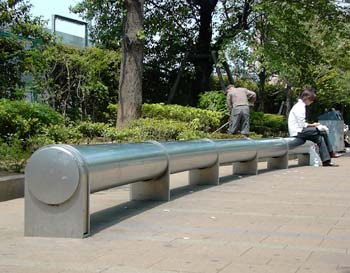It’s Murphy’s Law! There always seems to be something that occurs just after a lecture that reminds me: Oh I should have included this or that. Almost as I walked out of this lecture I remembered a podcast that I should have mentioned. It was 99% Invisible (episode 126: Walk this way). Well at least I get to include it in this post. The interview with wayfinding expert Jim Harding was fascinating in the ways in which subtle cues are used to ensure that people walk in the correct direction in public spaces. For an interesting article on Harding and wayfinding check out How You Know Where You’re Going When You’re in an Airport.
Enough about what I should have included.
I began with examples where people have been overly reliant on technology mainly through examples of people ending up in accidents by using GPS for car navigation (see here and here). It could be easy to say that the people who ended up trusting technology beyond what is recommended – or even despite clear signals to the contrary – are stupid. But this seems to minimize the role of technology.
So in a discussion of control via design I began by using Jeremy Bentham and his dream of the model prison Panopticon. Apparently he would argue against the trend to send prisoners to Australia by pointing to the
‘failures’ of colony: that the society was immoral; that transported convicts were not reformed; that transportation was unjust and borderline illegal; and that the convict system was inefficient and hugely expensive. New material – Panopticon versus New South Wales
Apparently he also cherry picked his arguments and ignored facts that didn’t suit his theory. This man really wanted to build his prison. But the Panopticon becomes more relevant to the modern discussion when we bring in Michel Foucault who saw it as a metaphor for the way in which control in society (not only in prisons) was being internalized and the freedom of the individual was being subverted.
In language the discussion of control is seen through the Sapir-Whorf hypothesis which questions whether our language controls our thoughts. Would we be able to think about freedom if we lacked the words for it? This example comes from George Orwell‘s 1984 where society was being controlled by several means but not least the ability to speak of injustices.
All this was a lead up to present the work of the urban planner Robert Moses. He was highly influential in creating cities and suburbs in New York and he also was responsible for downgrading the importance of public transport.
In his article “Do Artifacts Have Politics?” Langdon Winner pointed to a biography of Moses where a co-worker hinted that Moses had made some New York bridges purposely too low to prevent buses from passing underneath them. These bridges effectively blocked buses from driving to the New York parkways and therefore excluded all those who didn’t have cars from enjoying them. Winner’s argument was that Moses’ politics were embedded in the bridges. This argument has been refuted by Bernward Joerges in his article “Do Politics Have Artefacts?”.
The question is not whether or not Moses was discriminating against a group but rather that design builds on the designers ideal of how a thing should be used. To illustrate this I used the anti-homeless design that has become a growing part of our public spaces.
My favorite image demonstrating this trend is from Yumiko Hayakawa’s essay Public Benches Turn ‘Anti-Homeless’ (also recommend Design with Intent)

With this simple design homeless people cannot sleep on this bench. At the same time nobody can be accused of discrimination since everybody is welcome to try to sleep on the bench. Most people with homes will go home to sleep. Homeless people will go elsewhere – this is control by design.
Here are the slides I used.